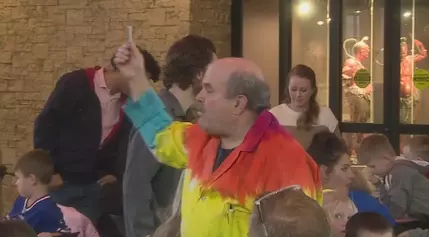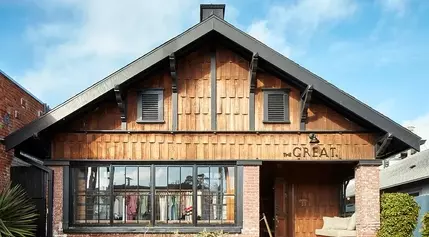A classic garden plant, geraniums have been a gardener's favorite for over a century. The old-fashioned standard for beds, borders, and containers, geraniums are still among the most popular plants today. This garden staple has a little secret: The plant we know as the common annual geranium is actually a Pelargonium. A completely different group of plants has Geranium as its genus name.
No matter which geranium types you select for your next container or flower bed, make sure to keep up with deadheading. And don't forget to feed them!
Geranium Overview
| Genus Name | Pelargonium |
| Common Name | Geranium |
| Plant Type | Annual, Houseplant, Perennial |
| Light | Sun |
| Height | 6 to 24 inches |
| Width | 5 to 24 inches |
| Flower Color | Orange, Pink, Purple, Red, White |
| Season Features | Fall Bloom, Reblooming, Spring Bloom, Summer Bloom, Winter Bloom |
| Special Features | Good for Containers, Low Maintenance |
| Zones | 10, 11 |
| Propagation | Seed, Stem Cuttings |
| Problem Solvers | Deer Resistant, Drought Tolerant |
Where to Plant Geraniums
Geraniums shine in beds and borders. Traditional bedding types love hot weather and hold up well in dry conditions. They are also focal flowers in container groupings and standouts in window boxes. With their wide range of color, shape, and size of blooms, it's hard not to find a reason to use geraniums everywhere.
Although most geraniums are grown as annuals, they are perennials in Zones 10-11. Bring them indoors to overwinter, if you like, and then replant them outdoors in spring, or they can bloom indoors all year long if they get enough light.
How and When to Plant Geraniums
Wait until the last frost date in spring has passed to plant sun-loving annual and perennial geraniums. You can also plant perennial geraniums in early fall when the weather cools slightly. Choose an area with well-draining soil; geraniums don't like wet feet. Use a rake to loosen the soil down 12 inches and add compost. Give each plant space to grow. Depending on the variety, the spacing could be as little as 6 inches or as much as 2 feet. Dig a hole twice as wide as the nursery container. Carefully remove the plant from the container and position it with the top of the root ball at soil level, keeping the soil away from the plant stem. Water carefully so as not to wash the soil off any of the roots.
If you are planting a geranium in a container, choose a container that has drainage holes and fill it with potting soil. Position the plant so the top of the rootball is level with the soil line. Place the container in a sunny location and out of the wind.
Geranium Care Tips
Light
Most annual geraniums do best in a full-sun location. Ivy geraniums are an exception; they prefer some light shade.
Soil and Water
Loamy, well-draining soil is best for growing geraniums. If your soil is heavy, incorporate compost, peat or perlite into it. If you are planting geraniums in containers, use commercial topsoil and mix in sand and a little peat moss for the best drainage. Good drainage is essential.
Wait until the top inch of soil is dry to water the geranium plants. Watering once or twice a week, depending on the season and weather, is usually sufficient.
Fertilizer
Annual geraniums are heavy feeders. The plants need to be fertilized once or twice a week with a liquid product to support flower production, especially when they are planted in containers. Outside of bloom season, applying a balanced, slow-release granular fertilizer every four to six weeks is sufficient. Follow the product label for the amount to use.
Pests and Problems
Some geraniums, particularly the ivy variety, suffer from a condition called edema on the underside of the leaves. When soil temperatures are warm and wet and air temperature is cooler and humid, plants take up more water than they can hold, which causes the leaf cells to stretch and become damaged with scabs that turn brown and bumpy. This isn't contagious, and damaged leaves can be removed.
How to Propagate Geraniums
Stem cuttings are the best way to propagate geraniums. To take a stem cutting, cut the stem just above a node (which encourages new growth on the parent plant). On your cutting, locate another node several inches away from the original cut and cut beneath it. Ideally, the cutting should be 4 to 6 inches long. Remove the leaves except for any at the top. Press the cutting into warm, moist planting medium. Then, water and place in indirect light. Within a couple of weeks, the plant will begin sending out roots.
Types of Geranium
Annual geraniums come in different types: zonal, ivy, and regal. The most common of the annual variety, zonal geraniums, is the most recognizable geranium; it gets its name from the broad band of darker coloring on its leaves. In some, this "zone" is more pronounced than in others. If you don't see this banding on the leaves but the flowers look like a zonal geranium, it could be a variety for which this coloring is not present or a seed geranium (the latter of which is a more inexpensive version of its zonal counterpart).
Zonal geraniums are grown from cuttings only and have been bred for traits like bigger and longer-lasting blooms, sterility (so that the plants don't waste energy on making seeds), and overall vigor and disease resistance. Zonal geraniums also thrive in the heat and sun of the summer and bloom all season if you remove old blooms.
Ivy geraniums are another popular variety, and as the name implies, these plants have more of a trailing habit with segmented leaves like ivy. Overall, blooms of the ivy types are similar to the zonals but with smaller bloom clusters and deeper purple flowers. Ivy geraniums take heat well but not quite as well as their zonal counterparts. If it is exceptionally hot, ivy geraniums will thank you for a little afternoon shade.
Regal geraniums, another popular plant variety, are grown for their large, extremely showy blooms. These fancy flowers come in many colors and have beautiful patterns you don't see in other types of geraniums. Regal types are probably some of the pickiest geraniums. They prefer a cooler growing season and will stop blooming in high summer heat. Make sure they have well-drained soil and keep them cool when the steamy temps arrive.
'Allure Pink Picotee' Geranium
Pelargonium 'Allure Pink Picotee' produces huge, hydrangea-like clusters of pale pink blooms edged in darker pink. It grows 18 inches tall.
'Aurora' Geranium
Pelargonium 'Aurora' is a heat-loving variety with large heads of bright magenta-pink flowers on 12-inch-tall plants.
'Caliente Hot Coral' Geranium
Pelargonium 'Caliente Hot Coral' produces bold coral-pink blooms with exceptional heat tolerance. It has an upright, mounding habit, and you don't need to deadhead the flowers. It grows 12 inches tall.
'Calliope Dark Red' Geranium
Pelargonium 'Calliope Dark Red' is a hybrid between ivy-leaved and zonal geraniums. It bears rich, dark red flowers and has a mounding/trailing habit. It grows 12 inches tall.
'Candy Cherry' Geranium
Pelargonium 'Candy Cherry' offers lots of bright cherry-pink flowers over rich, dark-green foliage. It grows 14 inches tall.
'Candy Fantasy Kiss' Geranium
Pelargonium 'Candy Fantasy Kiss' shows off rich pink flowers with a lovely soft pink edge. It has dark green foliage and grows 14 inches tall.
'Daredevil Claret' Geranium
Pelargonium 'Daredevil Claret' is a vigorous selection with dark red flowers all summer. It grows 24 inches tall and 14 inches wide.
'Daredevil Orchid' Geranium
Pelargonium 'Daredevil Orchid' shows off brilliantly colored clusters of lavender flowers all summer long. It grows 24 inches tall and 14 inches wide.
'Elegance Burgundy' Regal Geranium
Pelargonium 'Elegance Burgundy' is a cool-season variety that blooms in spring with rich burgundy flowers that look like they're made from crepe paper. It grows 12 inches tall.
'Elegance Imperial' Regal Geranium
Pelargonium 'Elegance Imperial' is a spring bloomer offering rich burgundy-purple flowers boldly edged in white. It grows 12 inches tall.
'Elegance Royalty White' Regal Geranium
Pelargonium 'Elegance Royalty White' is a cool-season variety displaying white flowers brushed with bright pink. It grows 12 inches tall.
'Global Merlot' Ivy Geranium
Pelargonium 'Global Merlot' bears rich wine-red flowers on a heat-loving plant that trails to 14 inches.
'Graffiti White' Geranium
Pelargonium 'Graffiti White' is a heat-loving selection with spidery white flowers on a plant that grows 14 inches tall.
'Indian Dunes' Geranium
Pelargonium 'Indian Dunes' offers attractive chartreuse foliage with a large bronze-purple blotch in the center of each leaf. It produces orange-red flowers and grows 10 inches tall.
'Maestro Rose Pink' Geranium
Pelargonium 'Maestro Rose Pink' offers large soft pink blooms touched with rose on a medium-sized plant with good heat tolerance. It grows 12 inches tall.
'Maiden Iced Wine' Regal Geranium
Pelargonium 'Maiden Iced Wine' is a cool-season variety with a compact habit and dark red flowers delicately edged in white. It grows 10 inches tall.
'Mini Karmine' Geranium
Pelargonium 'Mini Karmine' looks its best in hanging baskets or window boxes where you can enjoy it as the plant trails over the edges. It features bright magenta flowers and finely cut foliage.
'Moonlight Cranberry Blush' Geranium
Pelargonium 'Moonlight Cranberry Blush' features intensely pink flowers with a compact habit and lots of blooms throughout the summer. It grows 12 inches tall.
'Patriot Lavender Blue' Geranium
Pelargonium 'Patriot Lavender Blue' is a quick-growing variety with large lavender-pink flowers. It grows 16 inches tall.
'Royal Candy Pink' Ivy Geranium
Pelargonium 'Royal Candy Pink' is a trailing, heat-tolerant geranium with an abundance of rich pink flowers. It trails to 14 inches.
'Royal Lavender' Ivy Geranium
Pelargonium 'Royal Lavender' is a trailing, heat-tolerant geranium with soft, lavender-pink flowers all summer. It trails to 14 inches.
'Wilhelm Langguth' Geranium
Pelargonium 'Wilhelm Langguth' shows off attractive white-edged foliage and bright red flowers. It grows 2 feet tall.
Geranium Companion Plants
Nicotiana
Many types of nicotiana are terrifically fragrant (especially at night) and are wonderful in attracting hummingbirds and hummingbird moths. There are several types of nicotiana, also called flowering tobacco, because it's a cousin of the familiar tobacco plant. Try the shorter, more colorful types in containers or the front of beds or borders. The taller, white-only types, which can reach 5 feet, are dramatic in the back of borders. They're ideal for night gardens because they're usually most fragrant at dusk. These plants do best in full sun and moist, well-drained soil, and they may reseed.
Pentas
Pentas is one of the best butterfly-attracting plants around. It blooms all summer long, even during the hottest weather, with large clusters of starry blooms that attract butterflies by the dozens as well as hummingbirds. The plant grows well in containers and in the ground—and it can even make a good houseplant if you have enough light. It does best in full sun and moist, well-drained soil. Pentas is grown as an annual in most parts of the country, but it's hardy in Zones 10-11. Plant it outdoors after all danger of frost has passed.
Fountaingrass
Like so many grasses, fountaingrass is spectacular when backlit by the rising or setting sun. Named for its graceful spray of foliage, fountaingrass sends out beautiful, fuzzy flower plumes in late summer. The white, pink, or red plumes (depending on variety) continue into fall and bring a loose, informal look to plantings. This plant self-seeds freely, sometimes to the point of becoming invasive.
Garden Plans for Geranium
Tropical-Look Garden Plan
Make a bold garden statement with dramatic flowers and foliage.




















